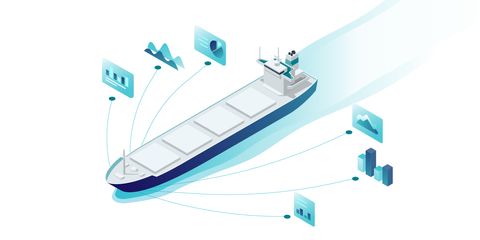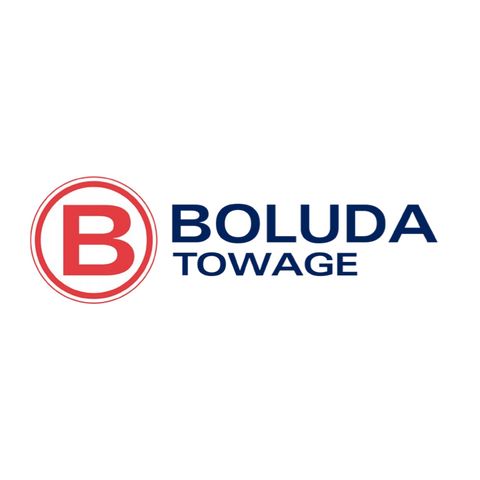
The journey towards decarbonization in the maritime industry is closely linked to the advancement of digital technologies, and at this moment, through the development of Connected Ships in particular.
This link is not just a coincidence, but a necessity, due to the limited availability of straightforward, low-emission alternatives to replace traditional fuel sources. The lack of alternatives means the sector is forced to pivot towards data and information technology to spearhead its emission reduction initiatives.
However, while digital technologies have the potential to offer more efficient operational methodologies and enhanced environmental performance, there are challenges, a key one of which is how to access high-quality data. As of 2024, a significant number of ships remain unconnected. This is not due to a technological deficit, but rather because each vessel has a complex collection of various machines, systems, and sensors. The unique nature of each vessel, even among seemingly identical ships, leads to a scenario where each functions as an isolated data silo — literally floating islands of unused and inaccessible data.
The adoption of Connected Ship solutions is accelerating
The technology behind Connected Ships isn't entirely new. In fact, its origins can be traced back to initiatives in the 1970s, when perishable cargo like fruit on ships, were monitored to ensure quality during transportation. Furthermore, the foundational aspects of Connected Ship solutions owe much to the advancements in the Internet of Things (IoT). IoT's growth has been instrumental in shaping how data connectivity and exchange are managed, principles that are now being applied to maritime contexts.
But more recently, things have begun to accelerate. Since the introduction of our Maritime IoT Gateway in 2018 and the launch of our Vessel API at the start of 2021 — both vital elements of Connected Ship solutions — we have begun to notice a wider acceptance and support for these technologies, especially in the deep sea market. Our customers are progressively adopting them as essential initial steps on their path towards a digitalized, net-zero future. Gartner, a prominent IT analyst and research group, has also taken note of this trend. In their 2023 Hype Cycle for Transportation and Smart Mobility, they highlighted Connected Ships as an emerging technology, indicating its increasing significance and potential within the sector.
This accelerated adoption can be attributed to a pivotal change in the regulatory landscape. Before 2023, the sector predominantly relied on self-regulation for emissions reduction. However, with the introduction of new regulations last year and a deeper understanding of upcoming policies, maritime companies are forced to take significant steps in emission reduction and environmental control.
As a result, the predominant use case for Connected Ship solutions now revolves around feeding high-frequency data into vessel performance systems and facilitating the collection of data required for emission reporting and verification, a requirement that was introduced earlier but has gained heightened importance due to the regulations now imposing actual costs on emissions.
How Onboard fits in to the evolving Connected Ship landscape
As the adoption of Connected Ship solutions starts to accelerate, Onboard is in a unique position to share insights with those looking to adopt the technology. Founded in 2016, we have been pioneers in the space right from the start. Central to our mission is to break down the data silo around the vessel, and to create a value-generating ecosystem around the technology. Our extensive experience has provided us with invaluable insights, which are especially relevant now as the maritime industry rapidly progresses towards digitalization and strives to achieve net-zero emissions.
Insight 1: Connect ships AND crew
While machines, systems, and sensors on vessels provide valuable data on performance, emissions, and other operational metrics, they don't capture everything. Vital information about the voyage, vessel activities, and operational details often resides solely in the crew's knowledge. Therefore, connecting your vessel's technological components is only half the battle; integrating your crew into this digital ecosystem is equally crucial. By implementing applications on a Maritime IoT Edge Gateway, which also handles automatic data collection, we ensure seamless connectivity for the crew.
Integrating high-frequency machine-generated data with crew insights significantly amplifies the value and depth of the analyses derived from this combined dataset. The human element introduces a critical layer of context to sensor data, enriching its interpretation and utility.
Such a connected environment paves the way for automating numerous informational processes between vessels, shore bases, and the broader supply chain. It facilitates a two-way flow of information, allowing data — either raw or processed — from the vessel or shore to be efficiently relayed back to the crew. By seamlessly incorporating high-frequency data into routine communications and reports, this strategy significantly reduces the administrative workload on seafarers. Furthermore, this infrastructure facilitates the onboard deployment of algorithms that preprocess data, optimizing its transmission over costly internet connections and ensuring the uninterrupted functionality of applications, irrespective of internet availability.
Insight 2: Ensure maximum compatibility and openness
Ensuring your fleet's connectivity solution is universally compatible with all varieties of onboard machinery, systems, and sensors is crucial. Opt for a brand-agnostic approach that guarantees seamless interaction across all engine, alarm monitoring, navigation, condition monitoring, etc. makes. It's vital that this solution accommodates all pertinent data protocols and industry standards, while also offering the flexibility to incorporate support for new, unique parameters and protocols as they emerge over time. This adaptability ensures your technology infrastructure can evolve alongside advancements in maritime equipment and data communication practices, maintaining its efficacy throughout the lifespan of your vessels.
Ensuring compatibility and openness on the shore side is just as critical as it is at sea. Your fleet's data should seamlessly integrate with the diverse array of solutions that make up your IT landscape, including various voyage management systems, dispatch and billing software, maintenance and compliance tools, and dashboarding solutions, each with its unique interface and data format requirements. This need for interoperability extends beyond your organization, encompassing partners, clients, suppliers, and the entire supply chain. It's a common practice to share vessel data, not just use it in isolation.
To achieve this level of compatibility and openness, Onboard has adopted the GraphQL standard for its Vessel API, a deliberate move that leverages GraphQL's proficiency in seamlessly integrating crew registrations with high-frequency sensor data via a single access point. This approach ensures the streamlined extraction of precise measurements and records, enabling the retrieval of distinct, combined, and summarized data sets. This essential functionality stems from the synergistic integration of our GraphQL API with a diverse database backend, offering unparalleled flexibility in tailoring data to meet highly specific needs.
Furthermore, the GraphQL query language supports precise data extraction, minimizing over-fetching or under-fetching issues. The API's self-documenting nature and its capacity for ongoing schema evolution without introducing breaking changes enhance its usability. These features collectively simplify the development process and improve the experience for developers, ensuring that the integration of fleet data into your shore-based operations is both efficient and adaptable to evolving needs.
Insight 3: Software and hardware should be future-proof
Traditionally, the disconnected nature of ships and their onboard equipment required physical presence for installation, updates, or maintenance often requiring service technicians to visit the vessel or crew members manually managing updates. It's essential to avoid solutions that require this labor-intensive and inefficient model.
It's vital to prioritize solutions that are adaptable and future-ready. Such solutions should seamlessly accommodate updates, whether for applications, security, or configurations, and easily integrate new sensors and data protocols. The key lies in enabling comprehensive remote configurability and updates across all software layers of the data-collection hardware, eliminating the need for direct intervention onboard.
In addition to ensuring long-term relevance and utility, this capability fundamentally transforms the installation process. Integration on board is notoriously challenging, but not for technical reasons. Rather, the most difficult aspect is the exchange of information and coordination of the activities of different stakeholders. By offering full remote configurability first of all sensor network components can be prepared and stored without prior customization, streamlining the delivery process. But more critically remote configurability allows for the decoupling of installation activities on board and implement the integration as work progresses on board the vessel.
Furthermore, it's important to consider the support lifespan of these systems. A long support period before a system ceases to receive software updates is crucial for maintaining operational efficiency and security. This extended support ensures that systems remain compatible and secure against emerging threats over time, thereby safeguarding the vessel's operational integrity and reducing the need for frequent hardware overhauls.
Insight 4: Adopt a standardized sensor network infrastructure
The structural design of a ship or the particular sensors it employs often necessitates the deployment of remote Input/Output (IO) units. These units are crucial for expanding the sensor network's coverage, enabling the seamless incorporation of sensors situated in the more remote or otherwise inaccessible sections of the vessel. Acting as intermediaries, they gather data from these remote sensors and relay it to the central gateway. The use of remote IO units can markedly diminish the requirement for extensive additional cabling by utilizing the vessel's existing network infrastructure to transmit sensor data efficiently.
In scenarios where remote IO units are essential, standardizing the components within the sensor network across the entire fleet is recommended. This approach streamlines both the installation process and ongoing maintenance, enabling the application of uniform knowledge and spare parts fleet-wide. Standardization fosters enhanced compatibility and interoperability within the network, minimizing potential conflicts and integration challenges. It simplifies network expansion or the integration of new sensors, making these processes more cost-effective. Moreover, a standardized system is inherently easier to support and troubleshoot due to the consistency of its components.
With a well-standardized sensor network infrastructure, transitioning between Connected Ship solutions becomes straightforward, significantly lowering the barriers and costs associated with switching. This flexibility is invaluable in adapting to evolving technological landscapes and operational requirements, ensuring that maritime operations remain efficient and up-to-date.
Understanding Connected Ship tech is critical, but so is how you use it
In this article, we have focused very much on the technology itself. This is of critical importance, as selecting the right technology solutions is fundamental to accelerating your vessels on the path to net-zero emissions. However, the value lies in how this technology is used.
In an upcoming article, we will dive deeper into practical applications of Connected Ships. We'll share insights gained from our collaborations with customers over recent years and discuss the essential tools and applications that should be considered when selecting your solution.

